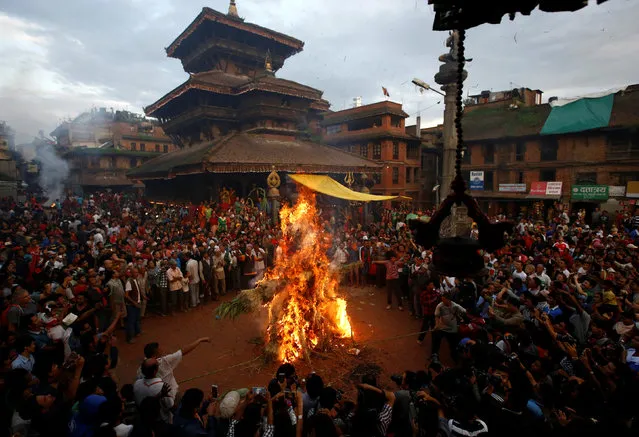
People set fire to an effigy of the demon Ghantakarna, to symbolize the destruction of evil, during the Ghantakarna festival at the ancient city of Bhaktapur, Nepal August 1, 2016. According to local folklore, the demon Ghantakarna is believed to “steal” children and women from their homes and their neighbourhoods. (Photo by Navesh Chitrakar/Reuters)
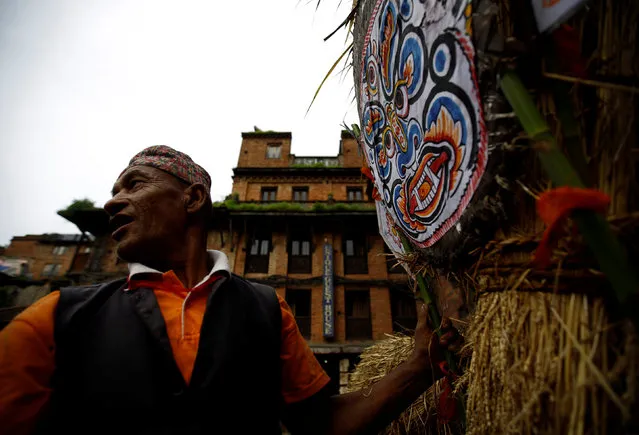
A man works to build an effigy of the demon Ghantakarna, before it is burnt to symbolize the destruction of evil, during the Ghantakarna festival at the ancient city of Bhaktapur, Nepal August 1, 2016. (Photo by Navesh Chitrakar/Reuters)
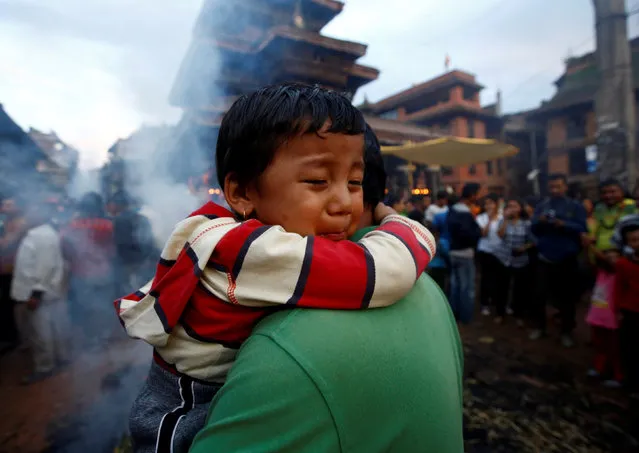
A child hugs a man as an effigy of the demon Ghantakarna is burnt, to symbolize the destruction of evil, during the Ghantakarna festival at the ancient city of Bhaktapur, Nepal August 1, 2016. (Photo by Navesh Chitrakar/Reuters)
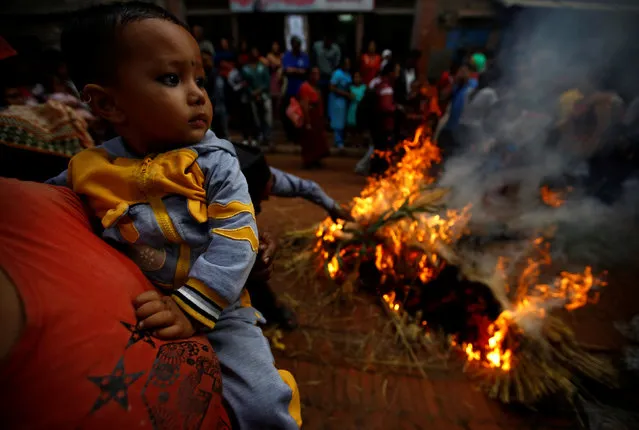
A woman carries a child as an effigy of the demon Ghantakarna burns, to symbolize the destruction of evil, during the Ghantakarna festival at the ancient city of Bhaktapur, Nepal August 1, 2016. (Photo by Navesh Chitrakar/Reuters)
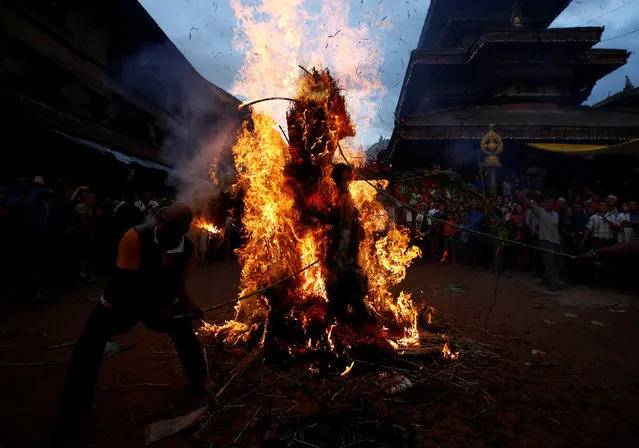
People set fire to an effigy of the demon Ghantakarna, to symbolize the destruction of evil, during the Ghantakarna festival at the ancient city of Bhaktapur, Nepal August 1, 2016. (Photo by Navesh Chitrakar/Reuters)
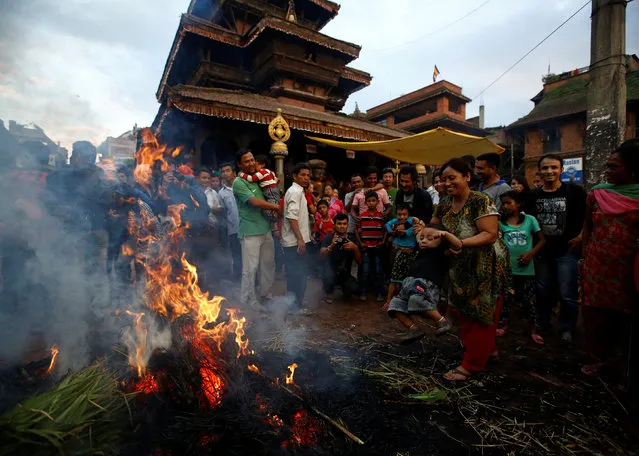
A woman (R) swings a child near a fire, where an effigy of the demon Ghantakarna was burnt to symbolize the destruction of evil, during the Ghantakarna festival at the ancient city of Bhaktapur, Nepal August 1, 2016. (Photo by Navesh Chitrakar/Reuters)
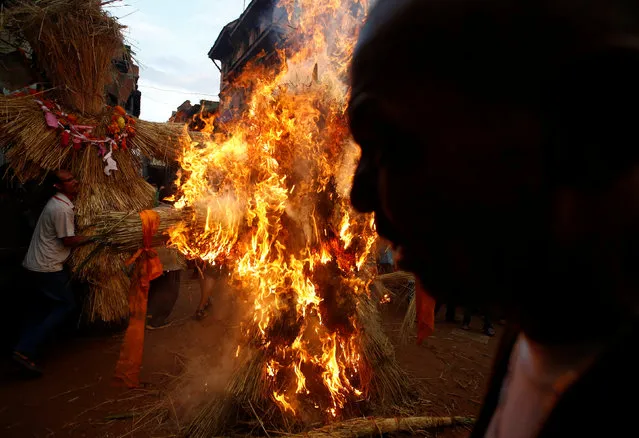
People carry an effigy of demon Ghantakarna (L) as another effigy (C) of the demon is burnt to symbolize the destruction of evil, during the Ghantakarna festival at the ancient city of Bhaktapur, Nepal August 1, 2016. (Photo by Navesh Chitrakar/Reuters)
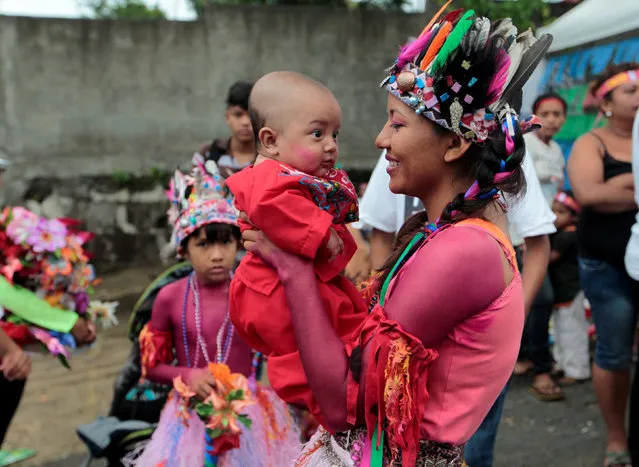
A woman and her son, both dressed as Indians, take part in the festivities honouring the capital's patron Santo Domingo de Guzman in Managua, Nicaragua August 1, 2016. (Photo by Oswaldo Rivas/Reuters)
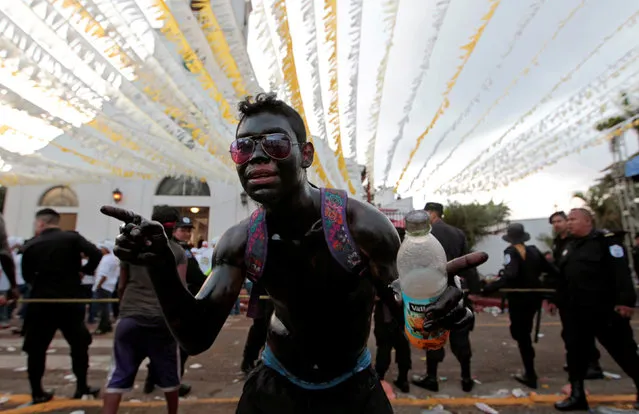
A man covered in motor oil takes part in the festivities honouring the capital's patron saint Santo Domingo de Guzman in Managua, Nicaragua August 1, 2016. (Photo by Oswaldo Rivas/Reuters)
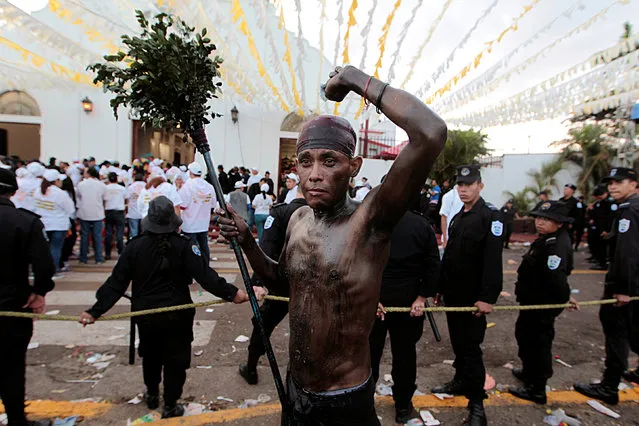
A man covered in motor oil takes part in the festivities honouring the capital's patron saint Santo Domingo de Guzman in Managua, Nicaragua August 1, 2016. (Photo by Oswaldo Rivas/Reuters)
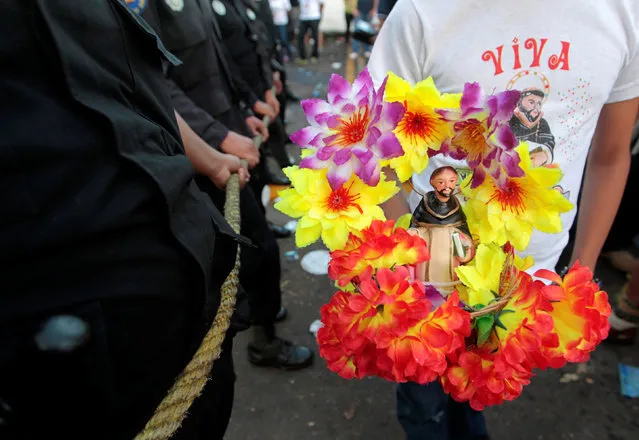
A child carries a figurine of Santo Domingo de Guzman during celebrations honouring the patron saint in Managua, Nicaragua August 1, 2016. (Photo by Oswaldo Rivas/Reuters)
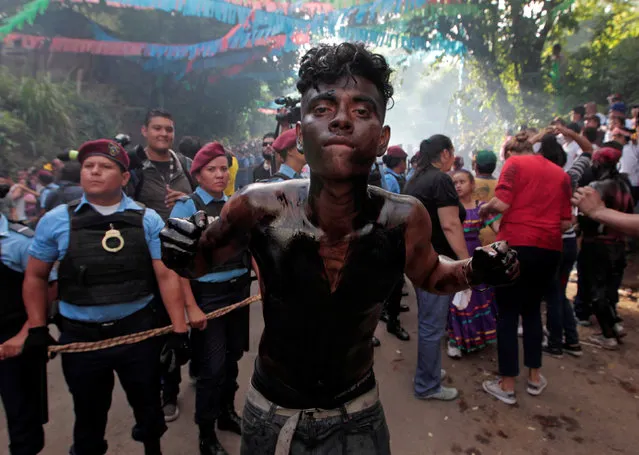
A man covered in motor oil takes part in the festivities honouring the capital's patron saint Santo Domingo de Guzman in Managua, Nicaragua August 1, 2016. (Photo by Oswaldo Rivas/Reuters)
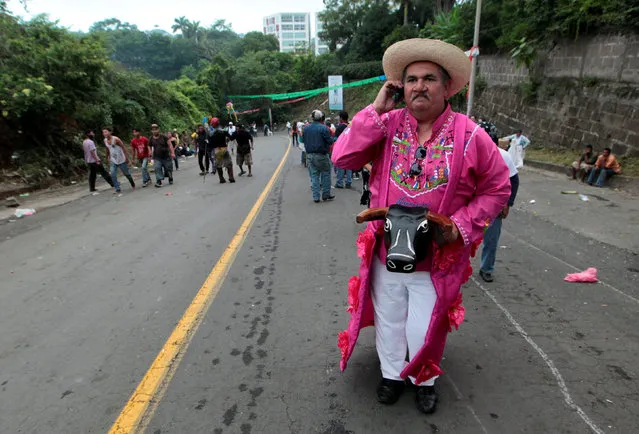
A man wearing a traditional costume takes part in the festivities honouring the capital's patron saint Santo Domingo de Guzman in Managua, Nicaragua August 1, 2016. (Photo by Oswaldo Rivas/Reuters)

A woman dressed as an Indian takes part in the festivities honouring the capital's patron saint Santo Domingo de Guzman in Managua, Nicaragua August 1, 2016. (Photo by Oswaldo Rivas/Reuters)
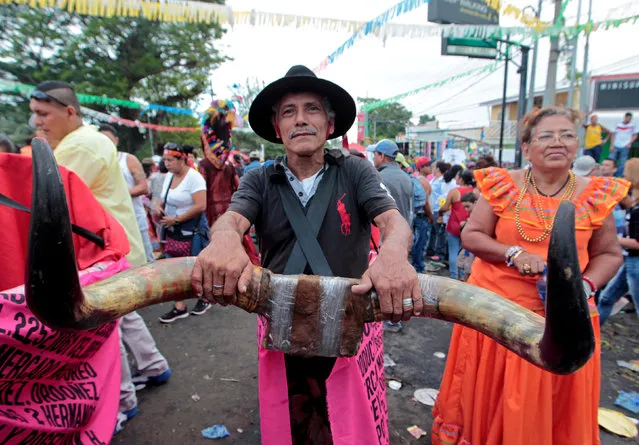
A man takes part in the festivities honouring the capital's patron saint Santo Domingo de Guzman in Managua, Nicaragua August 1, 2016. (Photo by Oswaldo Rivas/Reuters)
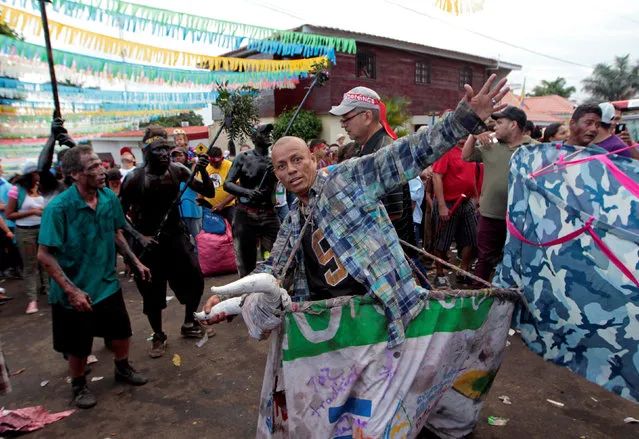
A man dances during the festivities honouring the capital's patron saint Santo Domingo de Guzman in Managua, Nicaragua August 1, 2016. (Photo by Oswaldo Rivas/Reuters)
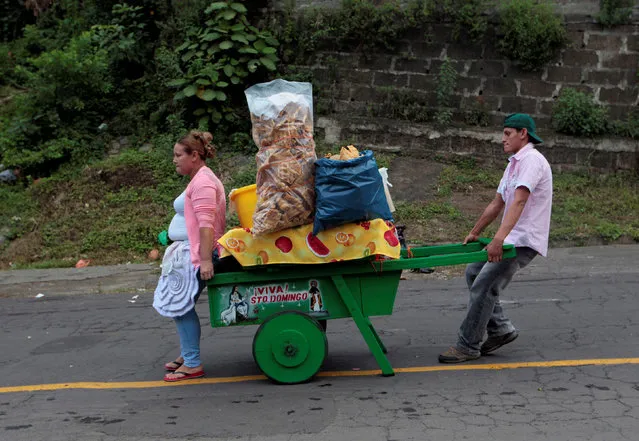
Street vendors sell Vigoron, traditional Nicaraguan food, during the festivities honouring the capital's patron saint Santo Domingo de Guzman in Managua, Nicaragua August 1, 2016. (Photo by Oswaldo Rivas/Reuters)
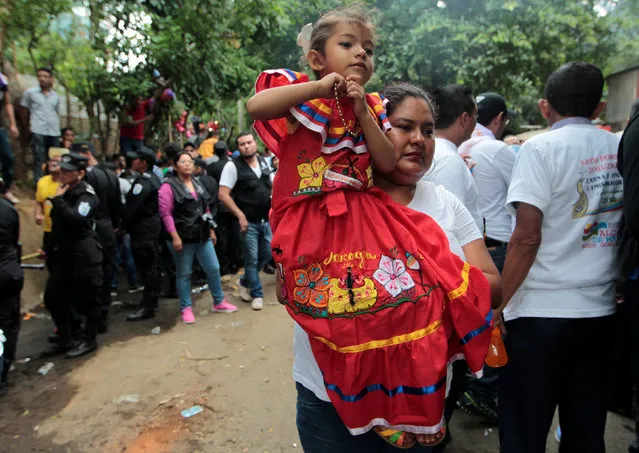
A girl dressed as an Indian takes part in the festivities honouring the capital's patron saint Santo Domingo de Guzman in Managua, Nicaragua August 1, 2016. (Photo by Oswaldo Rivas/Reuters)
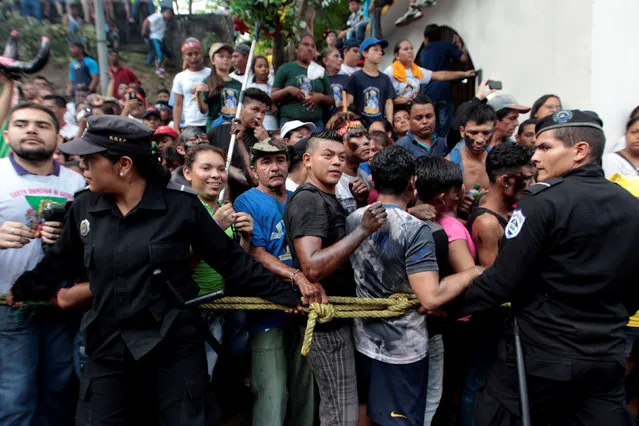
People take part in the festivities honouring the capital's patron saint Santo Domingo de Guzman in Managua, Nicaragua August 1, 2016. (Photo by Oswaldo Rivas/Reuters)
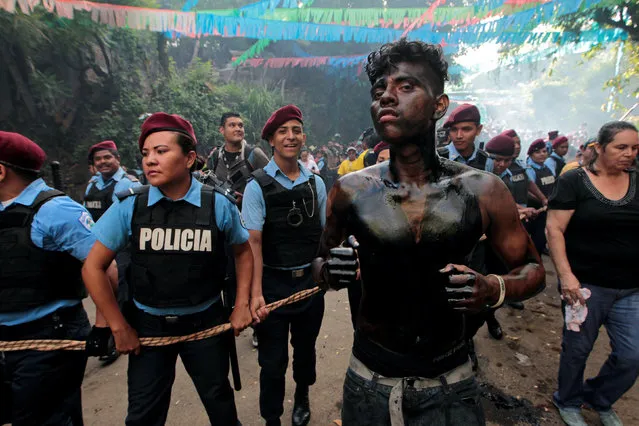
A man covered in motor oil partakes in the festivities honouring the capital's patron saint Santo Domingo de Guzman in Managua, Nicaragua August 1, 2016. (Photo by Oswaldo Rivas/Reuters)
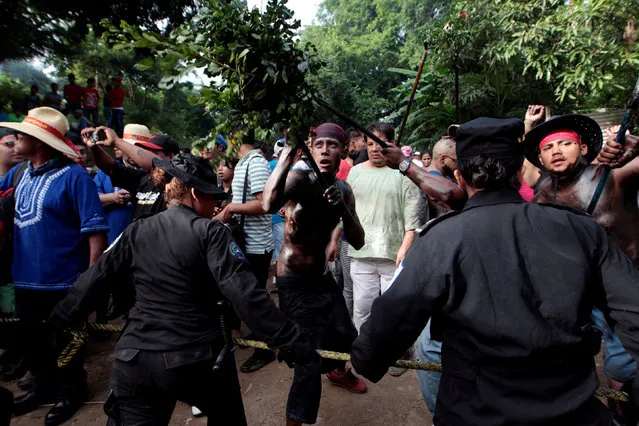
Men covered in motor oil take part in the festivities honouring the capital's patron saint Santo Domingo de Guzman in Managua, Nicaragua August 1, 2016. (Photo by Oswaldo Rivas/Reuters)
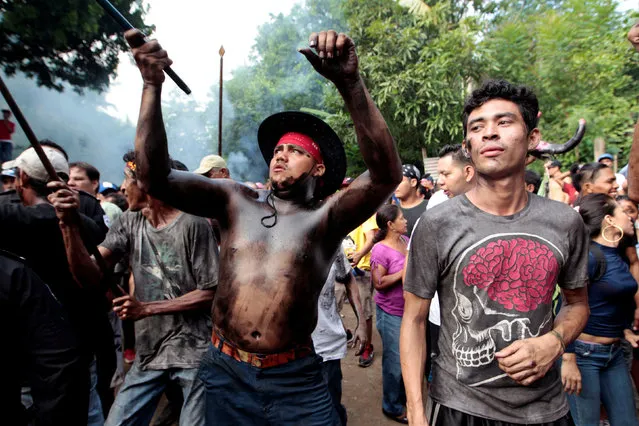
A man covered in motor oil takes part in the festivities honouring the capital's patron saint Santo Domingo de Guzman in Managua, Nicaragua August 1, 2016. (Photo by Oswaldo Rivas/Reuters)
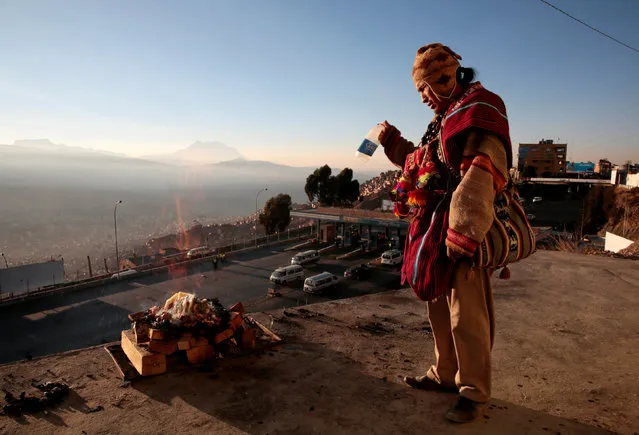
A Bolivian Aymara witch doctor sprays alcohol to burn an offerings for the “Pachamama” (Mother Earth) in El Alto, Bolivia, August 1, 2016. Pachamama is a goddess revered by the indigenous people of the Andes. She is also known as the earth/time mother. In Inca mythology, Pachamama is a fertility goddess who presides over planting and harvesting, embodies the mountains, and causes earthquakes. She is also an ever present and independent deity who has her own self-sufficient and creative power to sustain life on this earth. (Photo by David Mercado/Reuters)
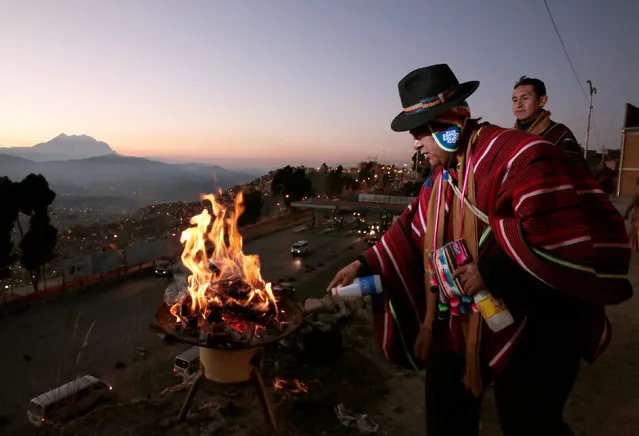
A Bolivian Aymara man sprays alcohol to burn an offerings for the “Pachamama” (Mother Earth) in El Alto, Bolivia, August 1, 2016. (Photo by David Mercado/Reuters)
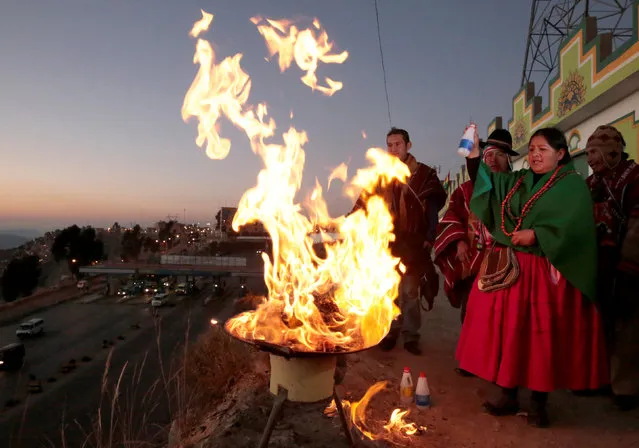
Bolivian Aymara people attend a ceremony to make offerings for the “Pachamama” (Mother Earth) in El Alto, Bolivia, August 1, 2016. (Photo by David Mercado/Reuters)
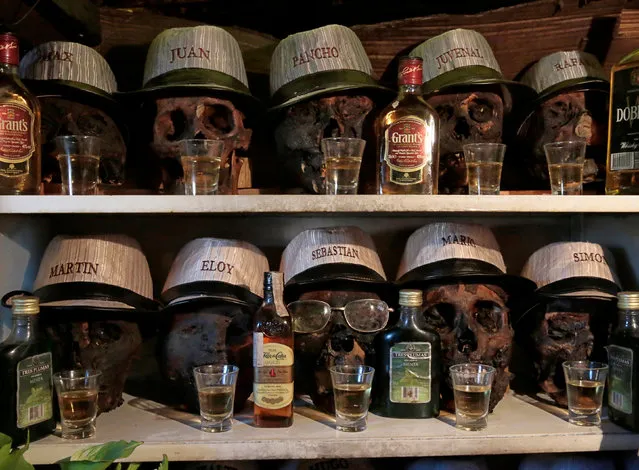
Skulls are seen at the witch doctor kiosk during the day of offerings to the “Pachamama” (Mother Earth) in El Alto, Bolivia, August 1, 2016. (Photo by David Mercado/Reuters)
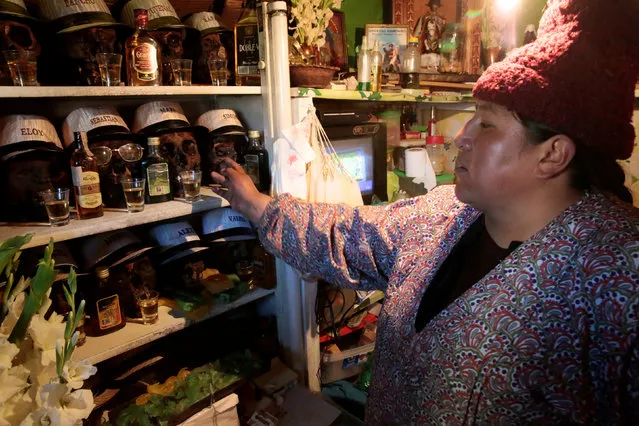
Monica, a witch doctor, speaks about offerings for the “Pachamama” (Mother Earth) in El Alto, Bolivia, August 1, 2016. (Photo by David Mercado/Reuters)
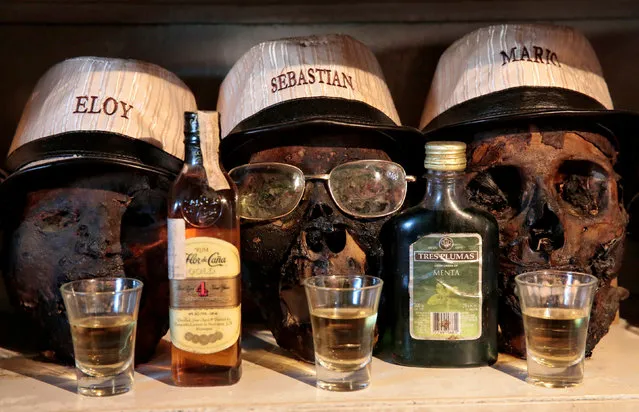
Skulls are seen at the witch doctor kiosk during the day of offerings to the “Pachamama” (Mother Earth) in El Alto, Bolivia, August 1, 2016. (Photo by David Mercado/Reuters)
02 Aug 2016 08:11:00,
post received
0 comments
